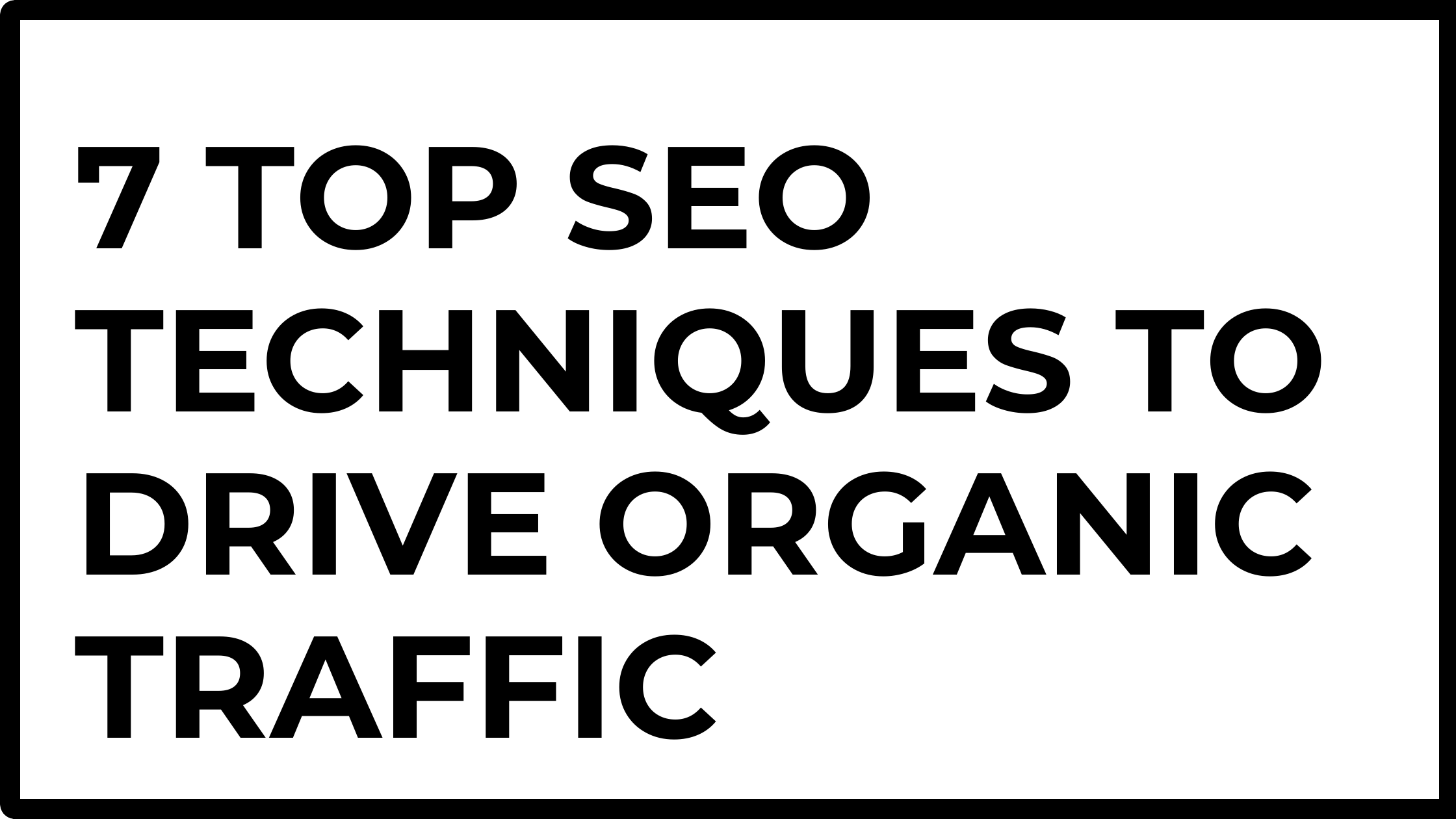About 3.5 billion Google searches occur in a day all over the world. Hundreds of websites provide the same data that a user searches on the internet but have you ever imagined why most of the traffic goes to the top 3 search results only? Because they have the most relevant information about the thing that the user searches for.
There are several SEO companies that offer SEO services to help online businesses. Nowadays, it is utterly crucial that you have good SEO for your website so that you can get a top position in Google searches. Why is it important? Because the more traffic you generate on your website, the more revenue you will get.
In this article, we are going to discuss 7 of the top SEO techniques to drive organic traffic.
Avoid Keyword Cannibalization
When you target the same keywords through multiple web pages of your site, keyword cannibalization takes place. In other words, one of your pages eats the traffic of your other page. This happens because two or more of your web pages compete with each other ranking for the same search result on the same page.
Some of you might think, “Isn’t it great to be present at several positions on a single Google page?” Well, it definitely is. But both of your web pages are stealing each other’s traffic as the number of visitors is divided among both pages.
How to fix keyword cannibalization?
Find out if any of your pages are cannibalizing other traffic. It can be done by searching the “site:yourwebsite.com keyword” on Google. Tools like Ahrefs, etc. also help in doing this.
If you cannot change the cannibalizing page’s context, you can merge their content and then delete the least performing one. However, you must add 301 redirects when you merge your content so you do not lose any given backlinks.
Improve the user experience on your entire site.
Let us start this tip by giving a small explanation of what the goal of Google as a search engine is. Its objective is similar to all search engines, finding the best results for every user’s query. If they fail to do this, people will move on to some other search engine.
Google is the largest search engine in the world and if you want your site to get a top rank on it, you need to optimize it for SEO in the best way possible. Moreover, Google is getting better day by day at determining the quality of every site. If your website seems outdated, untrustworthy, slow while loading, or amateurish it will drive your potential users back to the SERPs and they will check out another result. In this way, you lose a user and your bounce rate of affected pages will increase.
The sites that have low bounce rates on Google, get better rankings. According to Google algorithms, when a user hangs out on a website for long, it is because he finds it useful. Since Google wants to deliver the best possible search results, it will push that site up with a strong engagement rate.
Make sure your posts are easy to read.
If you have a website, you must know how essential it is to post something on it regularly. But if your posts are complicated and non-understandable to the users, they won’t read them and your website will be pushed down in the Google ranking.
Tips to give people the best of your content and make it easy to read:
- Write quality content: The first and foremost thing that you gotta do is create quality content. If your content isn’t up to the mark, has grammatical or spelling mistakes, or has an unpleasant tone, no one would like to read it.
- Shorter paragraphs: while writing a blog, limit each paragraph to 3-4 lines. You can even write one-sentence paragraphs but use them sparingly otherwise your posts would look like a grocery list. Make sure that each of your paragraphs supports one main idea and if you break the paragraph from the wrong places, your point might get lost.
- Sub-headers: Headings and subheadings are an essential part of a blog or web page as people do not directly dive into your long paras. Firstly, they read the headings and subheadings and if they find them useful, then they read your whole blog. Subheaders give people a quick understanding of what the blog is about, so make sure they are quite informative.
- Include images: Images not only make your write-up look attractive but also help in illustrating your points. While writing any lengthy blog, do not forget to include the images.
- Use bullet points: When you have plenty of data such as stats, ideas, facts, and examples, listing them in points makes them easier to read by the user. The general rule is when you have three or more items to list, use bullet points.
Increase website speed
A website’s loading speed is also a ranking factor on Google as viewers do not like to visit a site that takes too long to load and respond. This factor can make or break your site’s performance.
You can follow these tips below to boost your website speed:
- Delete unnecessary code on your page.
- Defer JavaScript loading
- Reduce server response time.
- Choose the right hosting option according to your requirements.
- Enable browser caching
- Enable compression
- Compress images to reduce the page size by 30 to 40%
Google has also launched several SEO tools that can help in improving site speed.
- PageSpeed Insights
- Accelerated Mobile Pages Project
- Test My Site
Design for mobile, first
These stats will show you why this point is crucial:
- 77% of Americans own and use a smartphone
- In the last 6 months, 79% of smartphone users made an online purchase using their smartphones.
- 40% of all e-commerce purchases were done using a smartphone during the holiday season of 2018.
- 80% of shoppers use mobile phones while being inside a physical store to search product reviews, find alternative store locations, or compare prices.
- More importantly, Google has also gone mobile-first.
In March 2020 Google also announced that now it will crawl sites by using its mobile smartphone user agent. In other words, the mobile version of your website will rank higher and be indexed above the desktop version- if it (the desktop version) gets crawled at all.
Therefore, your main focus should be building a site that performs excellently on mobile phones. Though desktop is still important, mobile must come first.
Improve User Experience (UX)
The reason behind high bounce rates, i.e., visitors exiting your website, is mostly because of an awkward UX (User Experience) and poor usability. It is really difficult to exactly pinpoint the problems of UX as they are different for every site.
Several tools can help you analyze how people interact with your website and will also give you ideas for improvement. Some of them are listed below:
- Crazy Egg
- Optimizely
- Google Optimize
- ClickFlow
Steal your competitor’s broken backlinks.
As we all know, how difficult it is to build quality backlinks. But using your competitor’s broken backlinks is better than using a dead one. Find a broken link using tools like SEMrush Backlink Analytics Tool, etc., and create content that fits it. Try the link and get it repointed to your content.
This will also prevent having a bad user experience on your site along with reducing the bounce rate.
Conclusion:
SEO is the most powerful technique that ensures that people who are searching the products and services like yours visit your website instead of your competitors. Adapt the 7 SEO techniques mentioned above to gain more organic traffic on your website.




Leave a Reply